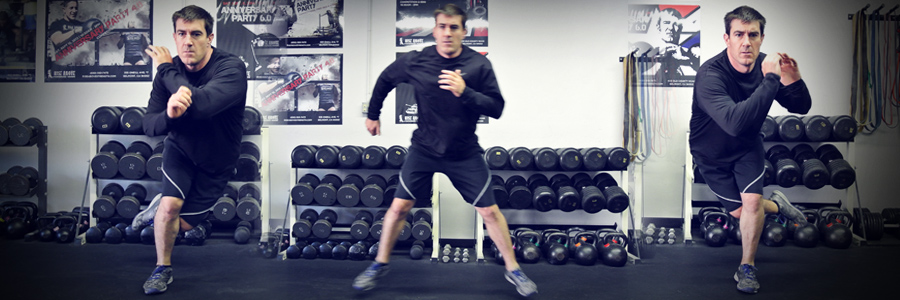How many repetitions do I have to do during strength training so that my muscle building works optimally? Actually, you can’t really separate this topic from the training intensity and the question of the optimal weights. But we do because it is always asked twice anyway.
Nevertheless, we will first address the question of the ideal training intensity for beginners and advanced athletes so that we can get a rough overview of the relationship between training intensity and the training volume, which is primarily derived from the number of repetitions and sets.

Repetitions and training intensity for beginners
Beginners should train in a range of 60-70% of their 1 RM for the first 4-6 weeks of strength training and then gradually increase the weights until they are in the classic hypertrophy range of around 70-80 % of the 1 RM lie. Incidentally, the 1RM describes the weight with which you can do a single clean repetition. With our 1RM calculator you can calculate your maximum strength.
The rather low weight still leads to enormous growth stimuli in untrained athletes, but at the same time protects the tendons, ligaments and joints that need a few weeks (more) to adapt to the unusual stress of strength training In the worst case, it can put you out of action for many weeks and eliminate training progress.
How many repetitions do advanced athletes have to do?

Experienced athletes can experiment with their training weight based on their advanced training status (the joints have already been adjusted, solid and supportive basic muscles, optimized energy stores and energy supply, etc.).
Normally advanced users trained with about 80% of their 1 RM, so that between 5-8 repetitions are possible.
This rep range is a combination of maximum strength training and strength endurance training and is known as the hypertrophy range, even if this term is a bit too general.
Advanced users can also combine several training systems in order to achieve sufficient muscle fatigue. A combination of maximum strength training with high weights and strength endurance with low weights can maximize muscle hypertrophy (e.g. drop set method).
While the high weight (80-100% of the 1 RM) ensures maximally intense stimulation, such high weights cannot produce complete fatigue, because it is simply too heavy to carry out further clean repetitions after the muscle failure to be able to. To do this, you would now have to reduce your weights so much (less than 60-70% of the 1 RM) that you can cleanly “empty” your muscles. But be careful: training to the point of complete collapse is not effective.
Buy steroids at the best price in the UK by following this link https://buysteroidsgroup.net/
The repetition ranges: How many repetitions are necessary for which training goal
In practice, strength training is often divided into different repetition ranges, each of which pursues different training goals. Of course, that’s only half the story. But first of all, the subdivision. It generally looks like this:
Popular rep ranges:
- 1-5 repetitions: Maximum strength training
- 5-8 repetitions: Hypertrophy training (misleading term)
- 6-12 repetitions: Muscle building training (real name)
- 12+ repetitions: Strength endurance training
- 30+ repetitions: Interval training
Our small and recurring graphic shows you once again the connections between training intensity and energy supply.
Now you could quickly get the impression that I am not training my muscle endurance at all if I only train in a rep range of 1-5 reps. On the other hand, my maximum strength doesn’t seem to increase at all if I only play around in the range of 12 repetitions or more. Is it really like that? Nope.
Before you complain that I don’t explain this again, I’d rather do it. We have already discussed the different types of hypertrophy of your muscles in the section on muscle hypertrophy, which are also relevant here.
Despite this very clear numerical classification, there are no “separate areas” that promote maximum strength, muscle development or endurance in isolation. Similar to fat burning, muscle hypertrophy is a complex process in which all influencing factors always run in parallel (with changing proportions).
With the combination of weight + repetition range you only influence the conditions in which these hypertrophy processes take place.
For example, maximum strength training primarily leads to myofibrillary hypertrophy (see above) while sarcoplasmic hypertrophy becomes more and more important with increasing repetitions and decreasing weights.
Rather, the actual repetition range aims at a certain training goal, which can be achieved most effectively in precisely this repetition range.
The muscle fiber recruitment regulates your muscle hypertrophy

The muscle fiber recruitment is also used intelligently by your body. The repetition range also determines how many muscle fibers are activated in the event of stress and how high the proportion of fast twitch (FT fibers) and slow twitch muscle fibers (ST fibers) .
With a high load with heavy weights and few repetitions, beyond 80% of the 1RM, your body must immediately activate all available motor units one after the other in order to be able to cope with this heavy load. Quasi the emergency program, which would be far too energy-consuming for everyday life and put too much strain on the metabolism.
With lower weights (i.e. more repetitions), not all muscle fibers need to be activated immediately in order to lift this significantly lower load.
That saves energy and protects the metabolism. In the event of stress, only motor units are activated one after the other if the fatigue of the active muscle fibers progresses too far and the load to be moved becomes increasingly difficult to cope with.
So we see muscle hypertrophy happening in all rep ranges. The trick is to intelligently combine high and light weights in one rep range that efficiently covers the entire hypertrophy spectrum (1 to 12+ repetitions).
With a pure maximum strength training you cannot cope with a high training volume (a lot of repetitions and exercise sets), because otherwise you would be exhausted and collapsed over the weight bench quite quickl.



